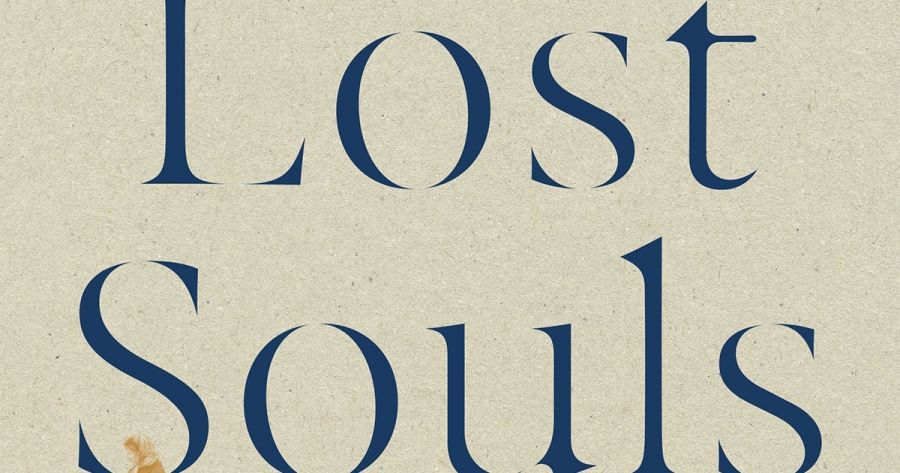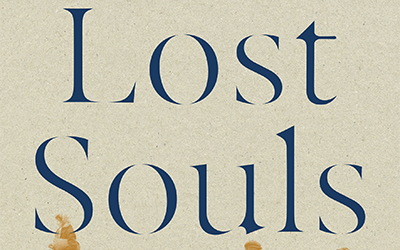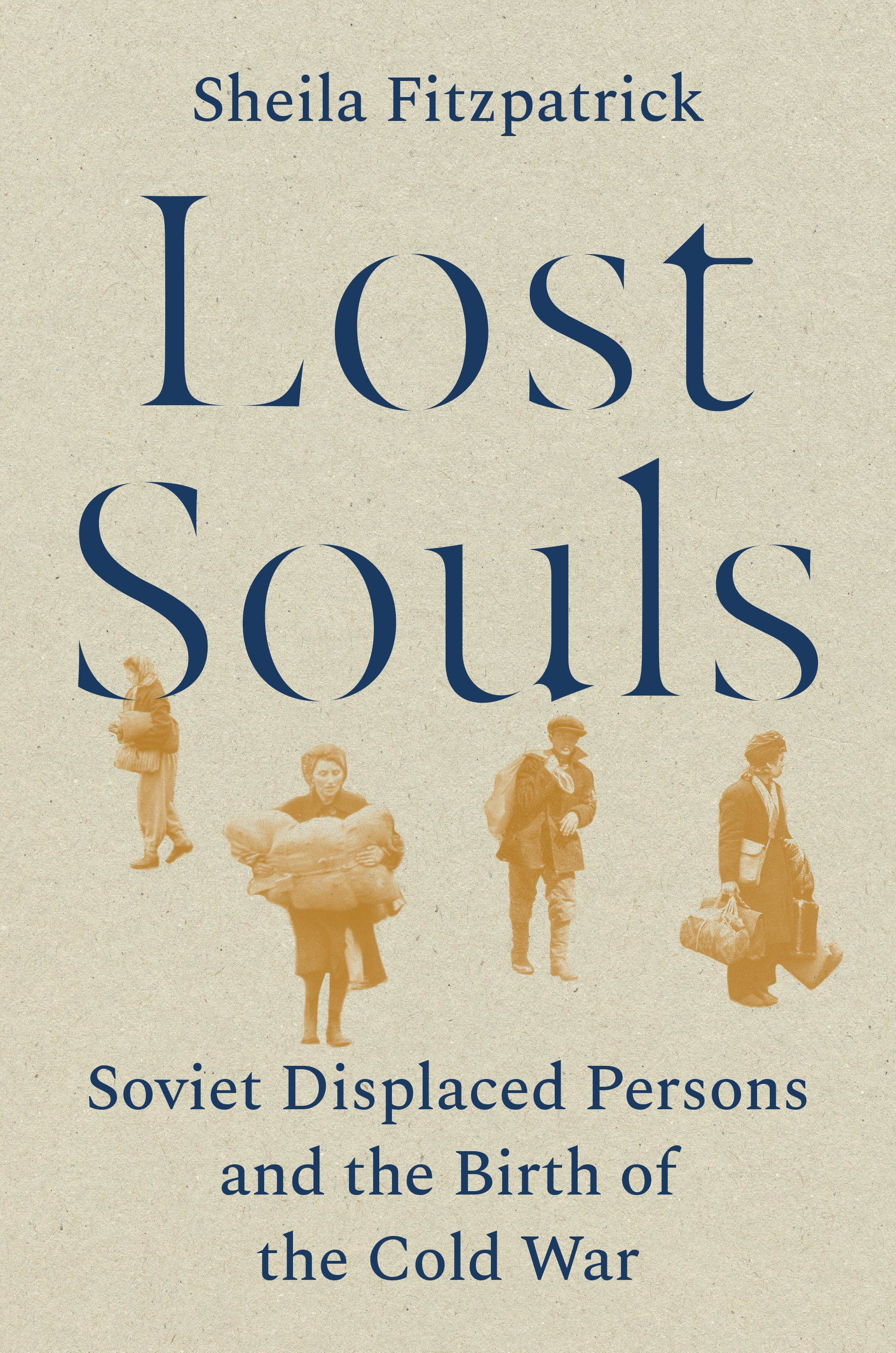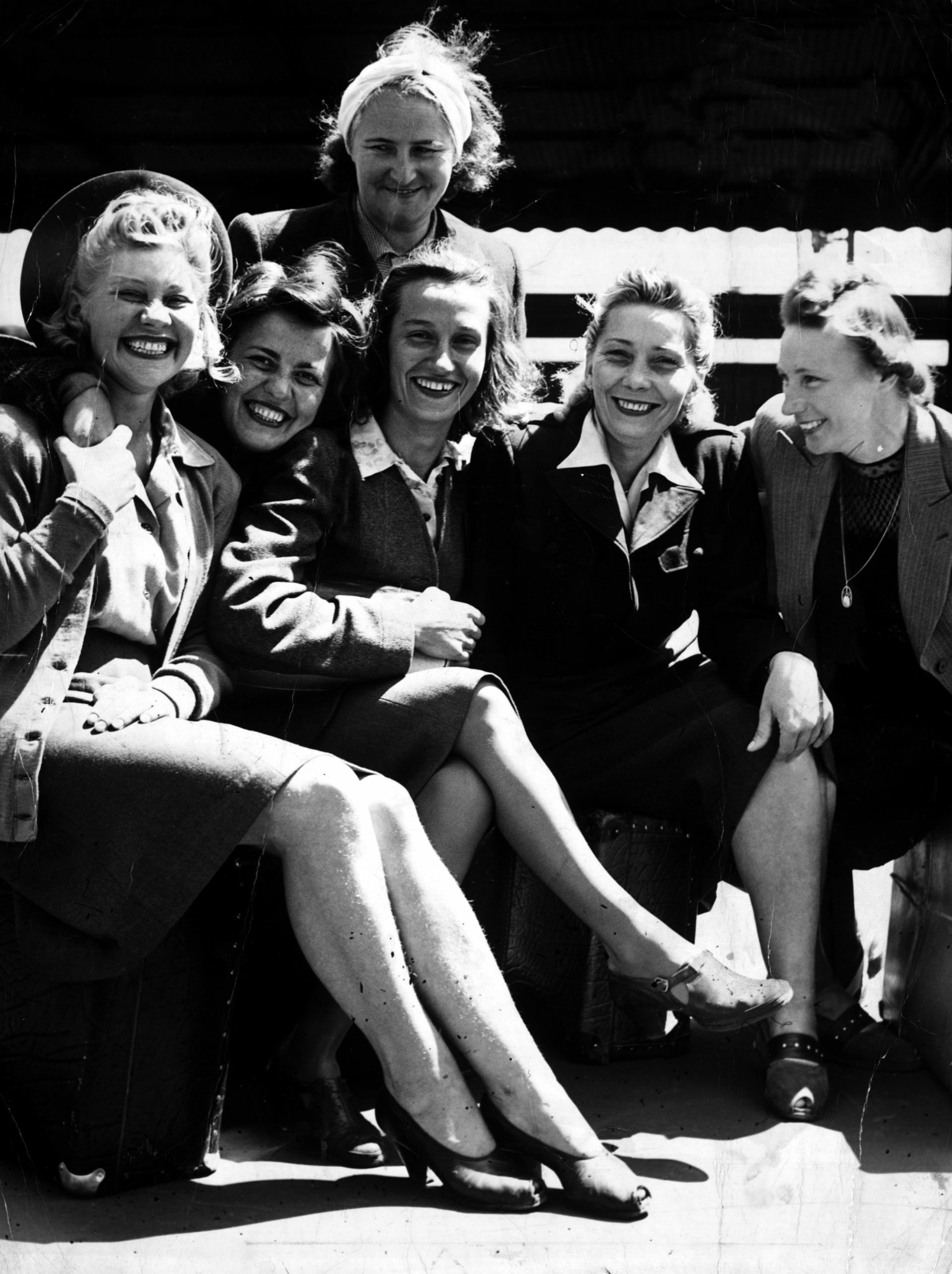
- Free Article: No
- Contents Category: History
- Review Article: Yes
- Article Title: Inside the DP camps
- Article Subtitle: An erudite account of postwar immigration
- Online Only: No
- Custom Highlight Text:
Many students of Australian history are aware of a particularly ugly cartoon published in the Bulletin in December 1946. ‘The Pied Harper’ depicted a hook-nosed Arthur Calwell playing a Jew’s harp welcoming a shipload of ‘imports’ (Jews) into Australia. This was the stereotypical image: bearded, unattractive, and similarly hook-nosed. The analogy with the legendary Pied Piper of Hamelin was clear. In contrast – and to assuage such public anxieties about mass migration – were the published photographs in January 1948 of Calwell, the immigration minister, celebrating Nordic-looking ‘beautiful Balts’, as he termed them, on their arrival to Australia.
- Featured Image (400px * 250px):

- Alt Tag (Featured Image): Phillip Deery reviews ‘Lost Souls: Soviet displaced persons and the birth of the Cold War’ by Sheila Fitzpatrick
- Book 1 Title: Lost Souls
- Book 1 Subtitle: Soviet displaced persons and the birth of the Cold War
- Book 1 Biblio: Princeton University Press, $59.99 hb, 351 pp
- Book 1 Cover Small (400 x 600):

- Book 1 Cover (800 x 1200):

- Book 1 Readings Link: https://www.readings.com.au/product/9780691230023/lost-souls--sheila-fitzpatrick--2024--9780691230023#rac:jokjjzr6ly9m
Whether Jewish or Baltic or from numerous other nationalities, 170,000 displaced persons (DPs) came to Australia from war-ravaged Europe in the immediate postwar period. The roles they played in the war were as disparate as their nationalities. Some were former Nazis, with SS tattoos removed; others were Russians determined to avoid forced repatriation to the Soviet Union; most were vulnerable and desperate for a new life. Many had ingeniously manufactured new identities. All were required to undertake two years’ hard labour before resettlement, a requirement unique to Australia. This much is familiar. But the broader story of the postwar resettlement program is often untold, unknown, or long forgotten. Which organisations were responsible? What processes and procedures were followed? Was there any connection between their roles and Cold War politics? What was it like inside the DP camps in Germany and Austria? And what of the DPs themselves – what were their experiences?
This book answers these questions and many more. Meticulously researched, beautifully structured, and engagingly written, Lost Souls focuses on 1945-52, when more than one million former forced labourers, prisoners of war, Holocaust survivors, and collaborators found themselves displaced in central Europe and ultimately resettled in Australia (the second-largest recipient outside the United States) and elsewhere. They included huge numbers of Ukrainians, Balts, Belarusians, and Jews who involuntarily acquired Soviet citizenship when their countries or territories were annexed or occupied by the Soviet Union. Hostility ran deep: when Soviet officials visited camps to organise the return of DPs to their Soviet-controlled homelands they were mocked, threatened, and assaulted. Many Soviet DPs were anti-Soviet and refused to return, emboldened by obstruction from Western authorities.
Initially, the camps were run by the United Nations Relief and Rehabilitation Administration (UNRRA); from 1947 by the International Refugee Organization (IRO). The former was more progressive and altruistic, and more responsive to Soviet demands for repatriation. Former New York mayor Fiorello La Guardia was its overarching director; against British opposition, he pushed for Jewish DPs to resettle in Palestine. The British zone director, Raphael Cilento, was an Australian, whose papers Fitzpatrick uses fruitfully. (This was an odd appointment. Although not discussed by Fitzpatrick, Cilento was an anti-Semite, a pre-war admirer of Mussolini, and narrowly escaped wartime internment in Australia.) Echoing Donald Trump’s recent condemnation of the humanitarian USAID as an agency ‘run by radical left lunatics’, it was claimed that UNRRA was honeycombed with Soviet spies and under communist domination. The pressure increased with the onset of the Cold War, and in July 1947 UNRRA was replaced by the US-bankrolled IRO with a different agenda: resettlement, not repatriation. This angered the Soviets, who wanted all their citizens returned, but pleased the Americans, ready to champion the flight of refugees from communism to the free world.
In an especially compelling chapter, Fitzpatrick takes us inside the DP camps. Sprawling and chaotic in 1945, efficiently run and sometimes self-governing by 1947, their conditions were surprisingly good. After the horrors of war, DPs were well protected, housed, cared for, and clothed. Compared with the surrounding German population, rations were generous, in part due to the black market that proliferated through the camps. Promiscuity also proliferated, which led to a postwar baby boom among DPs, as did marriages, often undertaken hastily if not randomly for pragmatic rather than romantic reasons. By 1949, 30,000 single Soviet women had entered into foreign marriages both to avoid repatriation and to increase chances of resettlement.
 'Beautiful Balts' (courtesy of National Museum of Australia)
'Beautiful Balts' (courtesy of National Museum of Australia)
The structure and character of the camps reflected their occupants, and Fitzpatrick provides fascinating case studies of Latvian and Russian camps. Two camps for whom no country existed were the Ukrainian and Jewish camps. The Ukrainian one was fiercely anti-Soviet and an incubator of an independent Ukrainian nationality. Ukrainian nationalists were the driving force behind an influential émigré organisation, the Anti-Bolshevik Bloc of Nations. The Jewish camps, in contrast, were not anti-communist but, with a predominantly Zionist leadership, developed a smuggling network alongside military training, enabling Zionist youth to be smuggled into Palestine before 1948 to fight for a Jewish homeland. (Interestingly, Australia, not Israel, became the more favoured destination for resettlement of European Jewry – hence the Bulletin cartoon.)
In orchestrating the mass resettlement of DPs, the IRO was supposedly blind to differences of nationhood or religion, but selection was targeted. Preference was given to Balts over Jews or Slavs. Young, fit, male labourers were favoured over intellectuals and professionals. The ill, elderly, or disabled were rarely selected. Indicative of emerging Cold War imperatives, communists and communist sympathisers were excluded, but not war criminals and pro-Nazi collaborators. For instance, there was minimal and ineffectual screening of Latvian Waffen-SS veterans. Even when wartime military collaboration was openly admitted, screening interviewers were unconcerned. The key point: virulent anti-communism meant that they were a security asset not a security risk.
One of Fitzpatrick’s central arguments is that DPs were not entirely subject to the policies and whims of the IRO. They had individual agency; they were not pawns of fate. They altered their age, destroyed documents, abandoned university degrees to become labourers, claimed to be single when they were not, and ‘rewrote their biographies to produce the desired nationality’. UNRRA and IRO officials’ linguistic limitations helped. Deception and lying was one form of agency. Another was DPs’ active complicity in recasting themselves from ‘victims of war and fascism’ to ‘victims of communism’. By the late 1940s and early 1950s, this narrative – consistent with the rising tide of anti-communism – was dominant and responsible for the United States, in particular, opening its gates to mass resettlement.
For the non-specialist, Lost Souls contains some startling revelations. Some examples: numerous Russian DPs were recruited, illegally, to the French Foreign Legion, some fighting in French Indo-China. At least 3,000 Jewish DPs, presumably disillusioned, reversed the flow and returned from Israel to resettle in Germany. DP sponsors from America’s Deep South were after cheap indentured labour to replace Black plantation labour. The entire population of Kalmyks, a nomadic Mongol people, was accused of wartime collaboration, deported by Stalin, and then, at war’s end, transferred to POW and later DP camps, where they languished because nobody wanted them.
Fitzpatrick tells a complex, multi-dimensional story (which this review barely scratches) about individuals as well as structures, state interests as well as Cold War dynamics, and about the vast and eventually successful engineering of population shifts, which contains lessons for today. Her skilful use of archival data (including ex-Soviet archives) is supplemented by evocative accounts found in the private papers of her late husband, Mischka Danos; these add valuable perspectives when archives are silent or perfunctory.
My quibbles are minor and Cold War-specific. The Soviet-controlled Cominform, inaugurated in 1947, was responsible for the ‘two-camps’ thesis, not the Comintern, dissolved in 1943. Arguably, 1946 is too early for anti-communist sentiments to be attributed to ‘McCarthyist fervor’. And Joe McCarthy himself, obscure until 1950, did not ‘force’ President Harry Truman into the loyalty-security program in 1947.
These aside, this remains a remarkable book. Yes, there are other very good histories of postwar immigration and DPs, but this study combines years of research, an intimacy with sources, an erudite understanding, and an analytical depth that surpasses all previous scholarship.


Comments powered by CComment